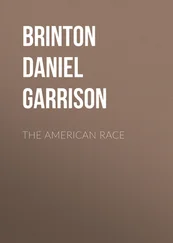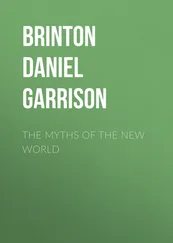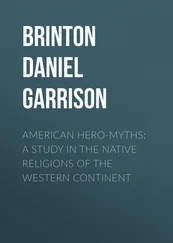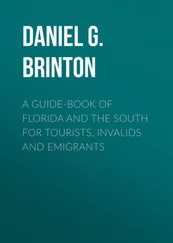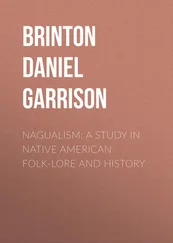Daniel Brinton - The Lenâpé and their Legends
Здесь есть возможность читать онлайн «Daniel Brinton - The Lenâpé and their Legends» — ознакомительный отрывок электронной книги совершенно бесплатно, а после прочтения отрывка купить полную версию. В некоторых случаях можно слушать аудио, скачать через торрент в формате fb2 и присутствует краткое содержание. Жанр: foreign_antique, foreign_prose, на английском языке. Описание произведения, (предисловие) а так же отзывы посетителей доступны на портале библиотеки ЛибКат.
- Название:The Lenâpé and their Legends
- Автор:
- Жанр:
- Год:неизвестен
- ISBN:нет данных
- Рейтинг книги:4 / 5. Голосов: 1
-
Избранное:Добавить в избранное
- Отзывы:
-
Ваша оценка:
- 80
- 1
- 2
- 3
- 4
- 5
The Lenâpé and their Legends: краткое содержание, описание и аннотация
Предлагаем к чтению аннотацию, описание, краткое содержание или предисловие (зависит от того, что написал сам автор книги «The Lenâpé and their Legends»). Если вы не нашли необходимую информацию о книге — напишите в комментариях, мы постараемся отыскать её.
The Lenâpé and their Legends — читать онлайн ознакомительный отрывок
Ниже представлен текст книги, разбитый по страницам. Система сохранения места последней прочитанной страницы, позволяет с удобством читать онлайн бесплатно книгу «The Lenâpé and their Legends», без необходимости каждый раз заново искать на чём Вы остановились. Поставьте закладку, и сможете в любой момент перейти на страницу, на которой закончили чтение.
Интервал:
Закладка:
Long before that worthy missionary was born, the name was in use in the official documents of the commonwealth of Pennsylvania as the synonym in the native tongue for the Delaware Indians, [49] Footnote_49_49 For instance, in Governor Patrick Gordon's Letter to the Friends, 1728, where he speaks of "Our Lenappys or Delaware Indians," in Penna. Archives , Vol. I, p. 230. At the treaty of Easton, 1756, Tedyuscung, head chief of the Delawares, is stated to have represented the "Lenopi" Indians ( Minutes of the Council , Phila., 1757), and in the "Conference of Eleven Nations living West of Allegheny," held at Philadelphia, 1759, the Delawares are included under the tribal name "Leonopy." See Minutes of the Provincial Council of Penna. , Vol. VIII, p. 418.
and it is still retained by their remnant in Kansas as the proper term to designate their collective nation, embracing its sub-tribes. [50] Footnote_50_50 So Mr. Lewis H. Morgan says, and he obtained the facts on the spot. "Len-ã'-pe was their former name, and is still used." Systems of Consanguinity and Affinity , p. 289 (Washington, 1871).
The derivation of Lenape has been discussed with no little learning, as well as the adjective lenni , which often precedes it (Lenni Lenape). Mr. Heckewelder stated that lenni means "original, pure," and that Lenape signifies "people." [51] Footnote_51_51 History of the Indian Nations , p. 401.
Dr. Trumbull, in the course of a long examination of the words for "man" in the Algonkin dialects, reaches the conclusion that "Len-âpé" denotes "a common adult male," i. e. , an Indian man; lenno lenâpé , an Indian of our tribe or nation, and, consequently, vir , "a man of men." [52] Footnote_52_52 Transactions of the American Philological Association , 1871, p. 144.
He derives these two words from the roots len (= nen ), a pronominal possessive, and ape , an inseparable generic particle, "denoting an adult male."
I differ, with hesitation, from such an eminent authority; but this explanation does not, to my mind, give the precise meaning of the term. No doubt, both lenno , which in Delaware means man , and len , in Lenape, are from the pronominal radicle of the first person né , I, we, mine, our. As the native considered his tribe the oldest, as well as the most important of created beings, "ours" with him came to be synonymous with what was esteemed ancient, indigenous, primeval, as well as human, man-like, par excellence . "We" and "men" were to him the same. The initial l is but a slight modification of the n sound, and is given by Campanius as an r , " rhenus , homo."
Lenape , therefore, does not mean "a common adult male," but rather "a male of our kind," or "our men." [53] Footnote_53_53 Weisberger's translation of Lenni Lenape as "people of the same nation," would be more literal if it were put "men of our nation." President Stiles, in his Itinerary , makes the statement: "The Delaware tribe is called Poh-he-gan or Mo-hee-gan by themselves, and Auquitsaukon. " I have not been able to reach a satisfactory solution of the first and third of these names. That the Delawares did use the term Lenape as their own designation, is shown by the refrain of one of their chants, preserved by Heckewelder. It was – " Husca n'lenape-win ," Truly I – a Lenape – am. Or: "I am a true man of our people." Trans. Amer. Philos. Soc. , Vol. IV, N. Ser., p. 381.
The termination apé is said by Heckewelder to convey the idea of "walking or being in an erect posture." A comparison of the various Algonkin dialects indicates that it was originally a locative, signifying staying in a place, abiding or sitting. Thus, in Cree, apú , he is there; in Chipeway, abi , he is at home; in Delaware, n'dappin , I am here. The transfer of this idea to the male sex is seen in the Cree, ap , to sit upon, to place oneself on top, apa , to cover (animate and active); Chipeway, nabe , the male of quadrupeds. Baraga says that for a Chipeway woman to call her husband nin nabem (lit. my coverer, comp. French, femme couverte ), is coarse.
The Lenape were divided into three sub-tribes: —
1. The Minsi, Monseys, Montheys, Munsees, or Minisinks.
2. The Unami, or Wonameys.
3. The Unalachtigo.
No explanation of these designations will be found in Heckewelder or the older writers. From investigations among living Delawares, carried out at my request by Mr. Horatio Hale, it is evident that they are wholly geographical, and refer to the locations of these sub-tribes on the Delaware river.
Minsi , properly Minsiu , and formerly Minassiniu , means "people of the stony country," or briefly, "mountaineers." It is a synthesis of minthiu , to be scattered, and achsin , stone, according to the best living native authorities. [54] Footnote_54_54 Mr. Eager, in his History of Orange County , quotes the old surveyor, Nicolas Scull (1730), in favor of translating minisink "the water is gone," and Ruttenber, in his History of the Native Tribes of the Hudson River , supposes that it is derived from menatey , an island. Neither of these commends itself to modern Delawares.
Unami , or W'nãmiu , means "people down the river," from naheu , down-stream.
Unalachtigo , properly W'nalãchtko , means "people who live near the ocean," from wunalawat , to go towards, and t'kow or t'kou , wave.
Historically, such were the positions of these sub-tribes when they first came to the knowledge of Europeans.
The Minsi lived in the mountainous region at the head waters of the Delaware, above the Forks, or junction of the Lehigh river. One of their principal fires was on the Minisink plains, above the Water Gap, and another on the East Branch of the Delaware, which they called Namaes Sipu , Fish River. Their hunting grounds embraced lands now in the three colonies of Pennsylvania, New York and New Jersey. The last mentioned extinguished their title in 1758, by the payment of one thousand pounds.
That, at any time, as Heckewelder asserts, their territory extended up the Hudson as far as tide-water, and westward "far beyond the Susquehannah," is surely incorrect. Only after the beginning of the eighteenth century, when they had been long subject to the Iroquois, have we any historic evidence that they had a settlement on the last named river.
The Unamis' territory on the right bank of the Delaware river extended from the Lehigh valley southward. It was with them and their southern neighbors, the Unalachtigos, that Penn dealt for the land ceded him in the Indian Deed of 1682. The Minsis did not take part in the transaction, and it was not until 1737 that the Colonial authorities treated directly with the latter for the cession of their territory. [55] Footnote_55_55 See Penna. Archives , Vol. I, pp. 540-1.
The Unalachtigo or Turkey totem had its principal seat on the affluents of the Delaware near where Wilmington now stands. About this point, Captain John Smith, on his map (1609,) locates the Chikahokin . In later writers this name is spelled Chihohockies , Chiholacki and Chikolacki , and is stated by the historians Proud and Smith to be synonymous with Delawares. [56] Footnote_56_56 Proud, History of Penna. , Vol. II, p. 297, S Smith, Hist of New Jersey , p. 456; Henry, Dict. of the Delaware Lang. , MS., p. 539.
The correct form is Chikelaki , from chik'eno , turkey, the modern form as given by Whipple, [57] Footnote_57_57 Delaware Vocabulary in Whipple, Ewbank & Turner's Report , 1855. The German form is tsickenum .
and aki land. The n , l and r were alternating letters in this dialect.
Интервал:
Закладка:
Похожие книги на «The Lenâpé and their Legends»
Представляем Вашему вниманию похожие книги на «The Lenâpé and their Legends» списком для выбора. Мы отобрали схожую по названию и смыслу литературу в надежде предоставить читателям больше вариантов отыскать новые, интересные, ещё непрочитанные произведения.
Обсуждение, отзывы о книге «The Lenâpé and their Legends» и просто собственные мнения читателей. Оставьте ваши комментарии, напишите, что Вы думаете о произведении, его смысле или главных героях. Укажите что конкретно понравилось, а что нет, и почему Вы так считаете.



